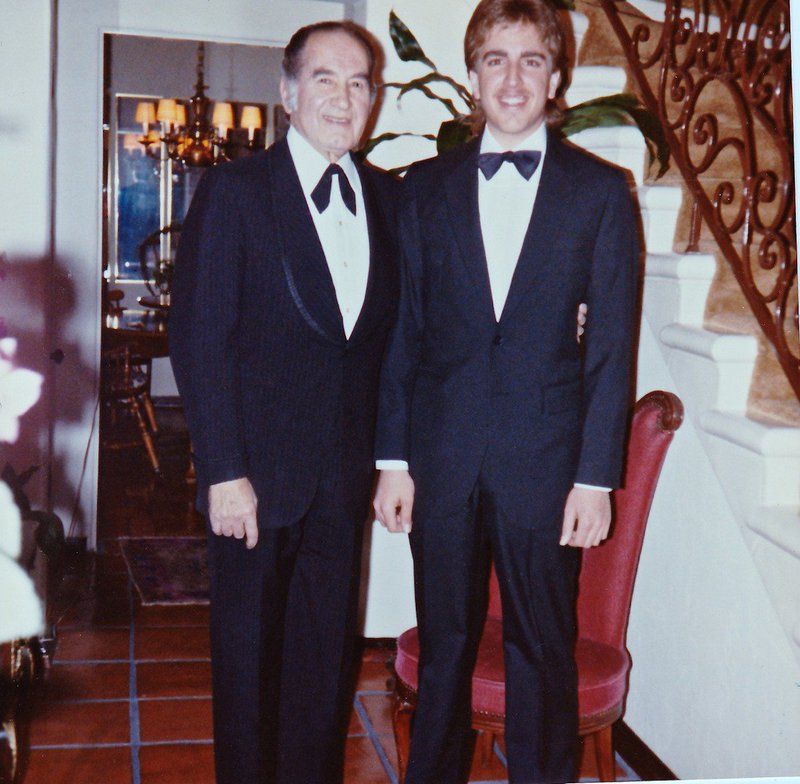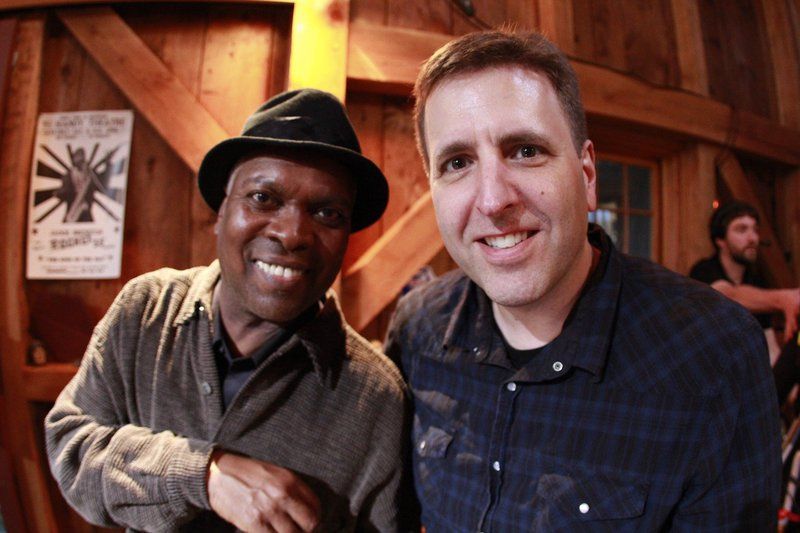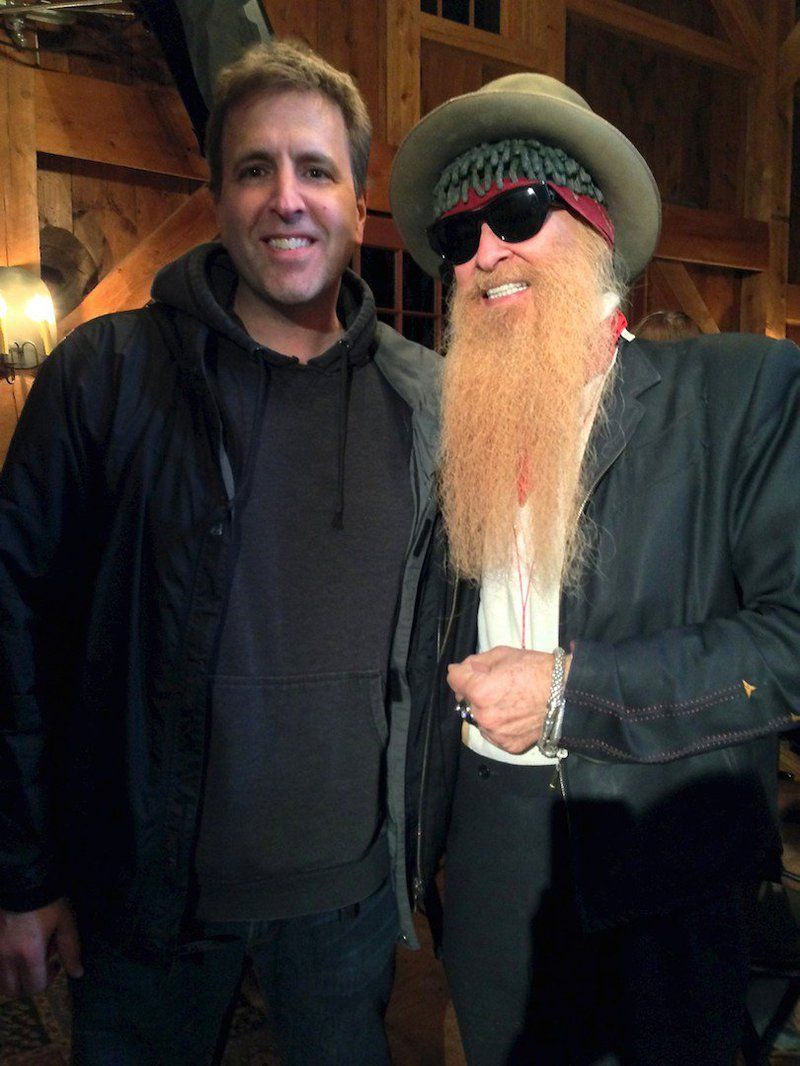

Living and Breathing Pop Music
He lives and breathes his art, from adolescence immersed in new tech to a fascinating career.
Peter Moshay
Peter Moshay lives and breathes his art, from an adolescence immersed in new electronic technology to a fascinating career tech-ing for Barry Manilow, Working at all levels with the legendary Hall & Oates, and ultimately engineering for everyone from J-Lo and Streisand to Ian Hunter to B.B.King. His passion for gear and for following anything new in music is completely infectious, and his stories of life with top music creatives could fill a novel. We catch up on a few of his anecdotes and hear how Sound Radix has been a ‘salvation’.
Let’s start at the beginning, how did such a phenomenal career evolve for you?
I was always a musician, and I knew I wanted to be a musician, that’s for sure. My grandfather was a working musician; he had an orchestra in Los Angeles for more than 60 years and was really successful at it. So I saw him doing his thing, and I played guitar and drums… I thought I’d be in a band one day and be doing that. Then the technical era came along. I grew up in Los Angeles so being around all the technical stuff, I just had an affinity for it.
I started kinda going into studios and working with people. I worked in a studio in Los Angeles for a while, and I worked with so many great musicians that I realized, you know, we don’t need another mediocre musician and I seem to have a good affinity for technical stuff, so I went that direction. Already when I was about 16 years old I was starting to make money by doing the technical stuff and doing sound. I figured out how to do drum triggering at a very early age, right when electronic drums came out and samplers and stuff. So that got me going, then I worked with so many great engineers in the studio that were so creative on getting drum sounds and all sorts of sounds – synthesizers and stuff, they were very open to all this new gear. Of course, I sat in the studio for so long with some of them that not only did I learn what they were doing, but I ended up doing it myself, ‘cause I was there and when you’re young, God knows, you can put in long, long hours and not lose interest. So that’s how I kinda got going.

Then Barry Manilow was your big break?
Yeah! I worked at the Guitar Center in Los Angeles - I had always worked at music stores since I was a kid. [Manilow] had come in and bought a bunch of equipment; drum machines and stuff. I worked with him on a record as well, just doing programming for him because all that stuff had come out and I knew about it. Then I went to help him set up his equipment for his tour, because he wanted to use all that LinnDrum and sequencers and stuff. His technician at the time just didn’t get it, and actually kind of had a breakdown, so they asked me ‘can you do this?’ I had no reason to say no, so I went and did it. I’d already worked with a bunch of bands like Quiet Riot and tons of bands around the Los Angeles area for a while. And I thought, ‘Barry Manilow, my Mom likes him so that’s good!’ And honestly I loved the music and his work ethic is great. He’s a tremendous guy; he’s just amazing, and he’s still going. I’m in awe of him in all facets, he’s fantastic. He’s so professional. If I learned anything from Barry besides incredible songs, his professionalism is the highest, bar none. He cares so much about putting on a fabulous show and doing great records. I’ve never seen someone so determined to do the best from the second he gets there. There’s this thing called the ‘Magic Hour’ when you’re working with Barry; from the second the doors open it’s the Magic Hour; you’ve got to be on your game, people can’t see you. It’s just got to be magical with his shows, and they are, he’s just fantastic. I’m glad to have seen that at an early age too; you could be influenced by way worse people! He’s an incredible artist and now especially more than ever I feel like, wow, it was really great to work with somebody who put so much into it, and still has the longevity of success.

Speaking of longevity, let’s talk about Hall & Oates. That’s the gift that keeps on giving! How did that whole thing happen?
It’s funny because I was working with another Pop band similar to them – I used to go out on the road and help people reproduce their album stuff live - I was working for the The Cars right before. That’s another band where I would tell people I’m working with The Cars and they’d say ‘oh, I’m not sure I know their stuff’, then they would come to the show and say ‘my God, I know every song!’ I was working with The Cars in New York for quite a while, and Hall & Oates were rehearsing right across the way. I met T-Bone just briefly in passing. Then all of a sudden I got off of that run with The Cars, so I started tech-ing for Hall & Oates in around ’87 - I got hired just around ‘Three Hearts in the Happy Ending Machine’. We went out on the road, just touring. It was still big, though getting to the end of their big, big thing.
There was a year or two of big. Then it started getting into grunge. Daryl and John needed a break - just a little break. They weren’t ever long, because during the break we were all working on something. Daryl was doing a record, John was doing his stuff, it just never really stopped. Hall & Oates never stopped touring, it never stopped. There was maybe one year, but even during that year Daryl was doing a record, and I and John did the very first Sports Illustrated swimwear video that came out! That was funny. We never saw one thing ‘til it was finished. We never made any music to video, we just made the music based on what they thought they wanted. John, T-Bone, Jimmy Bralower and me just locked ourselves in a studio and did all the music for that. There were just lots of little projects like that during that little break. Then Hall & Oates did another record – ‘Change of Season.’ It hasn’t stopped ever. To the public, though they only see them every resurgence, like now, there’s a resurgence, and a couple of years ago when they were put into the [Rock and Roll] Hall of Fame, it’s all kinda building again. Everything’s a cycle, and everyone sees careers come and go.

Daryl is a musician, and like all musicians, he says he needs time off, he takes a month off, then he’s like ‘get me out of here!’ He likes it for a while, but then he needs to create; John and him are creatives, they just have to keep doing it. It’s fuel for people like them. You can’t stop for too long without feeling like you’re missing something.
Let’s talk about your relationship with gear. What have been your milestones pieces of tech - computers, samplers, keyboards?
I took out a loan to get a Simmonds SDS5 when it first came out. I went with my Dad who signed for it because I was only 15, 16 at the time. I bought this SDS5 for $8000 because there were records that people wanted to rent them for. And I had access in Los Angeles to a guy named Glynn Thomas who was the head of Simmonds at the time. So I said if I can get this I can rent it out and trigger it for people, so that was the first big purchase I made. And the LinnDrum and the DMX and those things. I think the first milestone thing where I said ‘oh my God, it’s coming’ was of course the Atari ST; as with many musicians I felt like this was it! Notator was a brilliant product at the time. It just worked.

And now of course you’ve transitioned to plug-ins as well as hardware. Where did you first hear about us?
I saw an advertisement for Auto-Align, for phase alignment. I’ve been a phase junkie ever since I started engineering. I remember at 16 in the studio saying to our studio tech Larry ‘man could you make me something… I don’t want to flip the phrase I want to turn the phase. You gotta make something where I turn the phrase cos sometimes 180 isn’t right, sometimes 90 doesn’t seem right, sometimes it seems like it’s in between; I want to turn it and delay it.’ We used a two-man team and would move it a little bit I was so aware of phase from an early age. And when I saw that I thought ‘God, I have to try it’, and luckily they had the demo and within two seconds of trying the demo I was like ‘ok, this I have to have’.
I bought the plug-in and the bundle because once I heard the first one I knew these guys were onto something, on the same wavelength I was on, doing something that hadn’t been addressed in the plug-in world at all. I sent them a note saying thank you so much, ‘cause it was immediately a huge salvation for doing ‘Live from Daryl’s House’ with a lot of open microphones in close quarters. It’s a huge salvation for live room gig stuff - with outdoor concerts it’s still a huge necessity too, but if you’ve got a whole load of mics in a small room, nothing can save you better than phase. To really get your bottom in how you want it. You can actually get bottom which you didn’t even know you had! It’s crazy.
Once you demo it and try it and watch the tutorial - it’s not an obvious natural thing, like an EQ. It doesn’t have that instant gratification wow factor; it takes a second to figure it out and hear it but once you do then there’s not going back. You’ll always want to do it, once you know you can get it right with just a little bit of effort. The good thing about it is it’s so quick to just check things with it. I’ll try things on room mics with it: the kick-drum, the snare drum, the bass. At our club the stage isn’t huge, it’s quite intimate, and the bass amp, the DI and the room mics, they just need a little attention phase-wise, sometimes just a little delay and a flip. With the Auto-Align it’ll just delay the DI just enough where all of a sudden the combing goes away. The combing and bass becomes punchier, rounder. It figures it out for you.
Have you tried Drum Leveler yet?
Oh my god, I use Drum Leveler all the time. It’s another one of those things that you think wow, why didn’t this exist before? I’ve used expanders all the time, but this isn’t an expander, its just so damn cool. I can’t believe how effective it is for just straightening out a drummer. Just the other day I had it where a side stick was all over the place on this one track, and it fixes it, just fixes it.

Turning full-circle, if you could go back to 16-year-old Pete and give him one piece of advice as to what’s kept you in this game, what would you tell him was the key thing?
I just keep searching for new things, and I always come to the table with whatever’s new. I know whatever’s going on in the industry. I just listen to music constantly, I non-stop listen to every kind of music all the time. I search through iTunes & Spotify & the net, all the new releases. I love listening to new music and I just love pop music really. I’ve always worked with pop acts, and always loved pop music, pop and rock. I can dissect sounds really quick, I can listen to something and tell right away where it’s from. I’ve always been able to do that; I can’t stop listening.





























